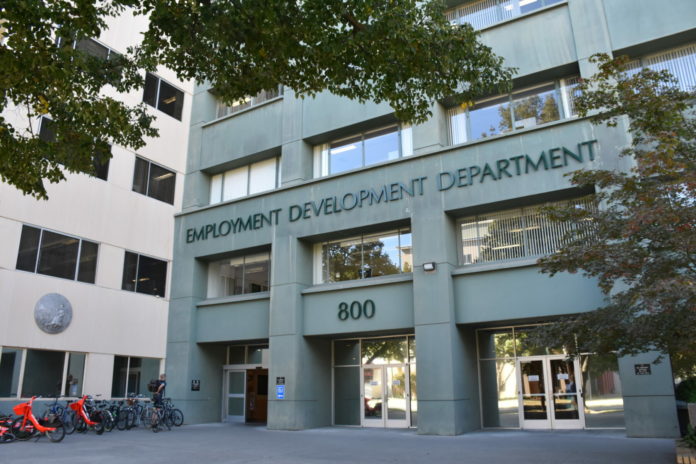Los Angeles County’s unemployment rate dipped back below 5% to 4.9% in April as employers in the county added nearly 30,000 jobs to their payrolls, according to state figures released Friday.
Those added jobs sent the county’s April payroll jobs total back over the pre-pandemic record to nearly 4.64 million, just 4,000 jobs shy of the all-time record high reached in November, according to the figures from the state Employment Development Department.
But that might be the last positive news on the payroll jobs front for a while. May and June are typically sluggish as public and private educational institutions shed short-term contract employees as the academic year winds down.
And this year the writers’ strike is likely to lead to a substantial and growing downturn in the payroll jobs figures as the impact spreads from the ranks of writers to other unions and businesses reliant on the entertainment sector.
As for the county’s 4.9% unemployment rate for April, that is in keeping with the trend of the figure hovering around the 5% mark since the beginning of the year. It’s also identical to the rate a year ago.
But the county’s April unemployment rate still was higher than the statewide rate of 4.5% and the nationwide average of 3.4% for that month.
The Employment Development Department also releases a breakout of the unemployment rates by cities. For the county’s two largest cities, Los Angeles and Long Beach, the unemployment rate was 4.6%. The lowest unemployment rate among cities with a labor force exceeding 10,000, was 1.8% in Lomita, while the highest was 6.5% in Calabasas.
For cities in the San Fernando, Conejo, Santa Clarita and Antelope valleys, Calabasas and its 6.5% unemployment rate jumped it past Lancaster and Palmdale; those latter two cities recorded rates of 6.1% and 6% respectively.
On the low end for cities with workforces exceeding 10,000 was San Fernando at 3.5%.
In between were the cities of Burbank (5.7%), Glendale (4.4%), Santa Clarita (4.1%) and of course Los Angeles with its rate of 4.6%
Turning back to the payroll jobs figures, the EDD figures showed a gain of 29,800 jobs to 4,646,400. The agency also released a seasonally-adjusted figure that showed a gain of about 21,500 jobs, or about half of the raw numeric gain.
The industry with the biggest net gain in jobs in April compared to March was health care/social assistance, up 7,500 jobs. Arts/entertainment/recreation was right behind, with a net gain of 7,300 jobs. That was followed by professional/business services, which registered a net gain of 2,900 jobs.
The information sector, which includes most of the now-striking writers, gained 2,000 jobs in April to reach nearly 140,000.
No major industry sector recorded a net loss in jobs in April. The manufacturing sector had the smallest gain of 200 jobs, essentially remaining flat at about 320,000 jobs.
For the 12-month period ending in April, the county gained a net 106,000 jobs, or 2.3%
Leading the way was the social assistance sector, with a net gain of 25,500 jobs over the 12-month period. Next came accommodation/food services (up a net 22,300 jobs) and then arts/entertainment/recreation (up 13,300 jobs).
The construction sector registered the biggest net drop in jobs, shedding 5,400 over the 12-month period ending in April as the rapid run-up in interest rates has taken its toll. The information sector was the only other significant jobs loser, shedding 1,800 jobs.
